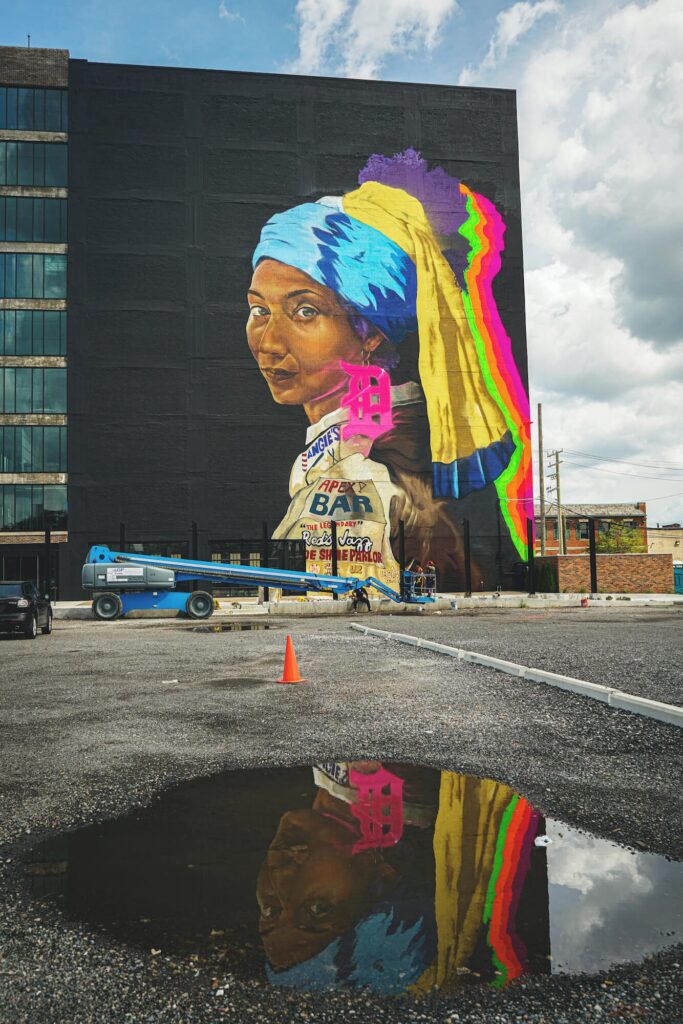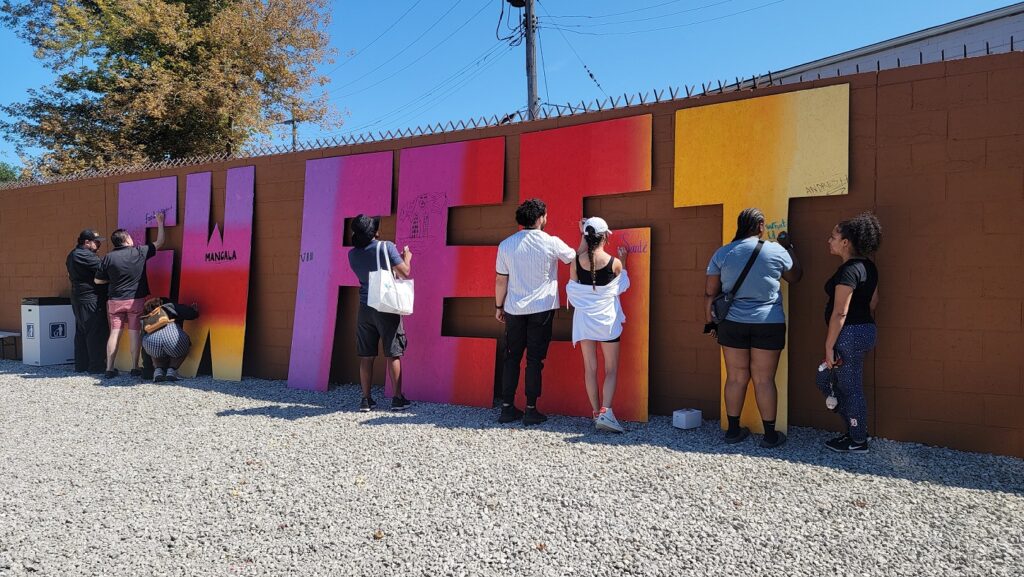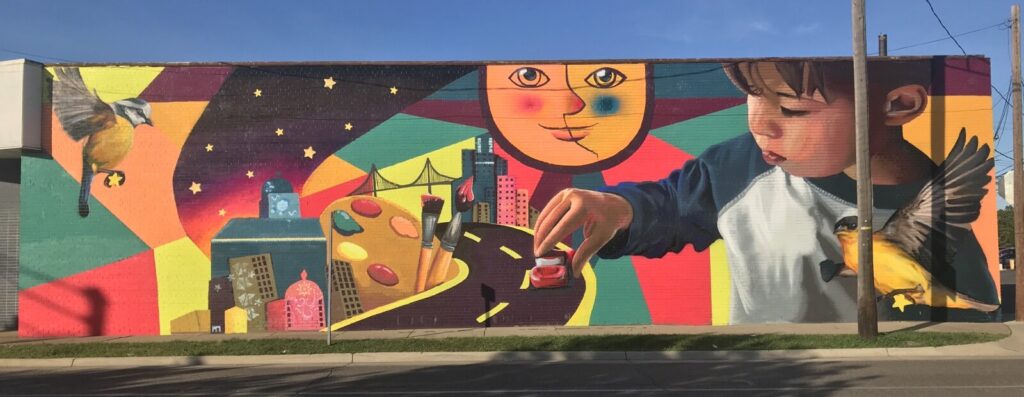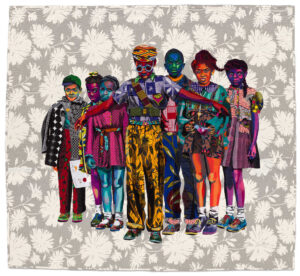2023 Equity Challenge Day 20: Art and Equity- How Can Personal Expression Support Social Justice?
Oh man, the power of art. The power of using the mind to create.
Detroit-based Graffiti and Urban Environmental Artist, creator of The Heidelberg ProjectVisual art is defined as the expression or application of human creative skill and imagination, typically in a visual form such as a painting or sculpture, to be appreciated primarily for its beauty or emotional power. At first glance, it might be easy to dismiss art as something children create for fun, or a luxury item collected and displayed in buildings owned by high-income individuals and corporations. However, if we look closer into a work of art, we can start to find a story in each piece told by its creator. In America, the stories of dominant groups are often the only ones represented in our classrooms, museums and public buildings — all of which are home to a variety of art forms we see from the time we are a child in kindergarten learning to fingerpaint, to an adult reading a magazine or walking past a painting in our doctor’s office.
According to a recent study by Williams College, “85.4% of the works in the collections of all major U.S. museums belong to white artists, and 87.4% are by men. African American artists have the lowest share with just 1.2% of the works; Asian artists total at 9%; and Hispanic and Latino artists constitute only 2.8% of the artists.” While these percentages may vary across disciplines and mediums, much of what we see is created by visual artists. This statistic shares a glimpse into who is creating the images we most frequently see, and in turn, what viewpoints are being shared at large.
In addition to artist representation, access to arts education is also inequitable in the United States. Research has shown that youth with access to the arts show higher academic achievement, graduation rates and employment rates later in life. Still, according to Americans for the Arts, “African American and Hispanic students have less than half of the access to arts education than their white peers.” The fact that minority races have less access to arts education than white youth perpetuates inequities for exhibited and career artists, immediately affecting whose voice is represented in the visuals we see daily. Reflect on what groups of people have you seen represented in artwork throughout your life. What artists do you know by name? What does this say about whose ideas are being represented in our communities?
While representation is still disproportionate, there are many artists and community groups in Southeastern Michigan working to change not only access to the arts, but also to use creative expression as a tool to advocate for change. Art for social justice is artwork that is created to spread awareness of justice issues such as distribution of wealth, opportunities and privileges within a society. Art is a powerful tool that helps us see into the perceptions and experience of others. Detroit artist Sydney James’ artwork not only counters the lack of Black women in art, but also sheds light on current injustices evoking conversations and promoting action by viewers. “She is a painter on a pointed mission to let each brush stroke spark conversations long silenced. In paintings and murals, Black women are first. Never last and never forgotten.”

Another key piece of social justice art is including the voices of individuals in a community, ensuring an artistic celebration of the stories of its residents. Garage Cultural, an arts organization in Southwest Detroit, serves as an anchor in honoring the community’s cultural heritage. A family operated organization, Garage Cultural focuses on four pillars of work in their community: art, music, resilience and activism. Under these four guiding pillars they use arts and culture as a tool to organize community and support crucial development in their neighborhood through public art projects, events and arts education opportunities. As a community, Garage Cultural believes that when individuals are proud of their surroundings, a natural process of positive self-imaging begins to take place, which ultimately affects the overall safety, empowerment and cohesion of a community. Garage Cultural uses artistic voice as a direct way to improve their community. For more information on the important work Garage Cultural is doing in Southwest Detroit visit their Instagram page.

Another organization working to amplify community voice and equitable access to the arts is Pockets of Perception (POP). POP is a youth arts program run by the Dearborn Community Fund that uses art as a tool to address issues of cultural diversity to arrive at a harmonious and more inclusive community. POP offers high school students the opportunity to create public art installations with local artists, providing them the space to share their interpretations of their world with their community through art. The piece you see here represents their idea of a bridge between the Detroit and Dearborn communities. How do you think having access to this arts opportunity has changed the lives of youth in the program?

There are many more artists working to promote equity and combat justice issues across our country. We encourage you to view some of the works of the artists below and ask yourself key questions about their meaning.
TODAY’S CHALLENGE
Read
- Read this article on Artworks to Address Social Justice. A broad range of topics are addressed. Find a piece of art that resonates with you. (9 minutes)
- Read more about artist Sydney James work in the article, Walls that Unite, Not Divide. Which projects of James’s use art as a tool for social justice? (6 minutes)
- Check out the work of artist Kehinde Wiley. His painting, Officer of the Hussars, can be viewed in the permanent collection at the Detroit Institute of Arts. How does Wiley’s work relate to the work of Sydney James, who was featured in today’s email? (3 minutes)
Watch
- This video introducing The Heidelberg Project. How did Tyree Guyton’s voice transform his community? (4 minutes)
- An explanation of Diego Rivera’s “Detroit Industry” located in the Detroit Institute of Arts. How did Rivera incorporate commentary on social justice into this work? (3 minutes)
Listen
- Listen to NPR’s interview of artist Bisa Butler. If possible, investigate her artwork while listening. (5 minutes)

Act
- Visit your local art museum or explore the National Gallery of Art’s online database and find three pieces of artwork made by someone of a different identity than you (race, ethnicity, religious affiliation, gender, ability, etc.). Journal in a small notebook about the piece. How does viewing this piece change your perception of the world? For a list of exhibits in your area, visit Arts & Culture | Michigan.
- Support the work of amplifying community voices by volunteering with or donating to local arts organizations. For a list of organizations, visit Michigan’s Arts and Cultural Organizations | Michigan Business.
- Advocate with the Arts Action Fund to promote improved access to the arts across our communities.
- Join us Friday for our Community and Closing Celebration at Belle Isle State Park in Detroit! We’ll complete a short walk in unity to symbolize our learning journeys, after which we’ll enjoy activities, snacks and music. Please click here to register. Space is limited.
Reflect And Share
- What stays with you from today’s challenge? What is something you learned?
- Art is all around us. How do the visual representations we see change our perception of people and places? What happens when certain people’s artwork is omitted from museums, classrooms and public art?
- Why is it important for people to have access to the arts?
- How does viewing the artworks and reflecting on the stories in this challenge affect your understanding of equity?



